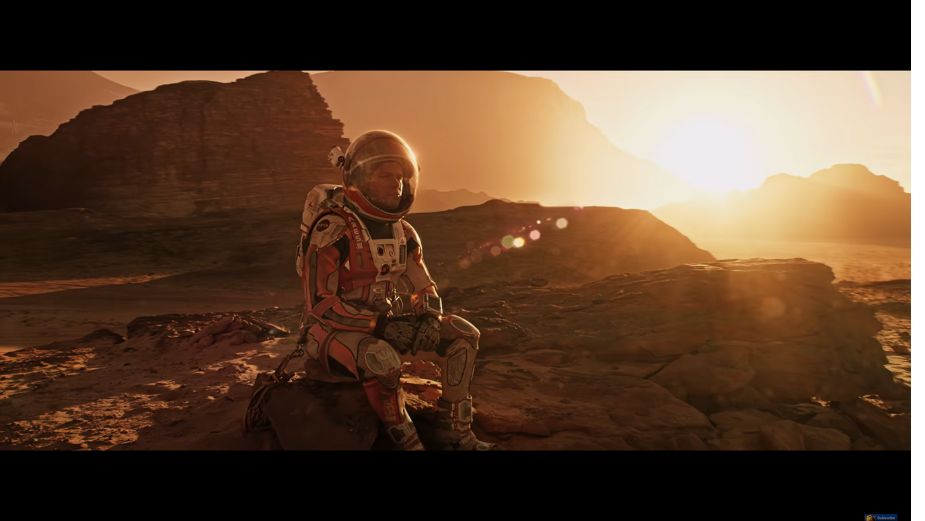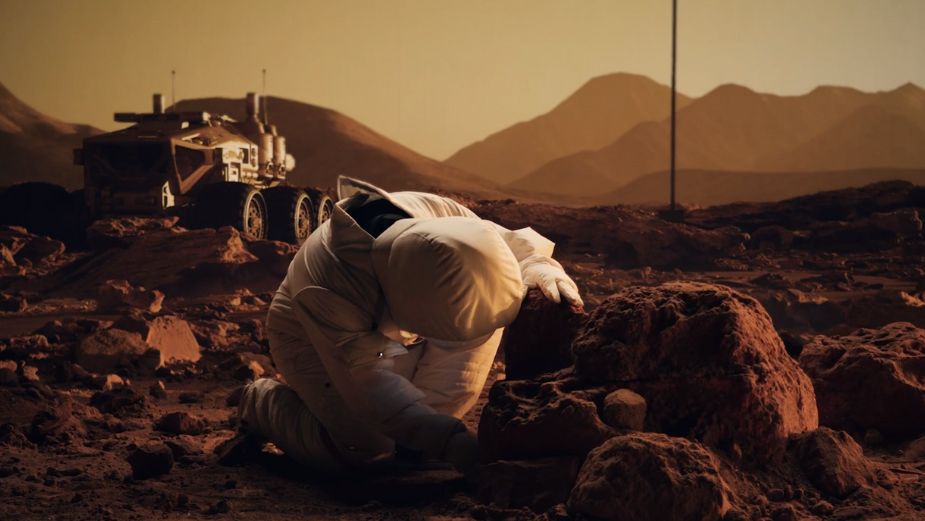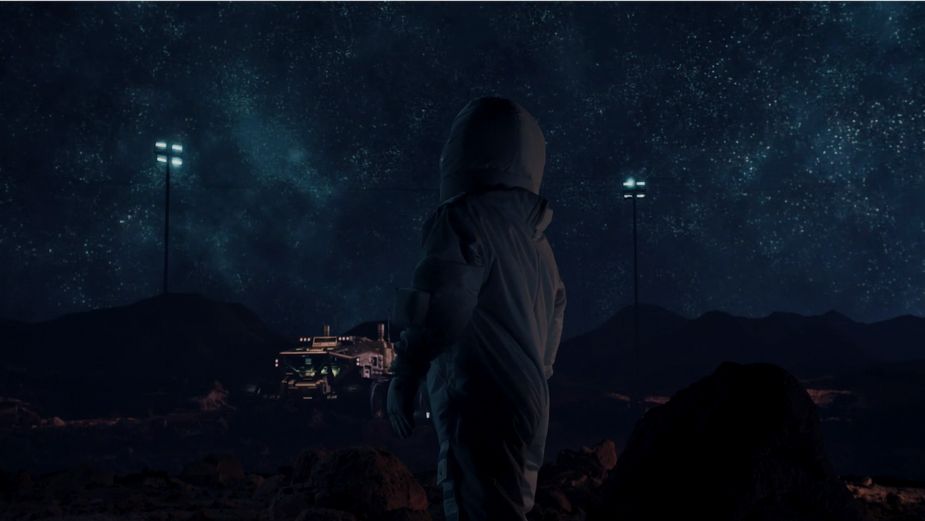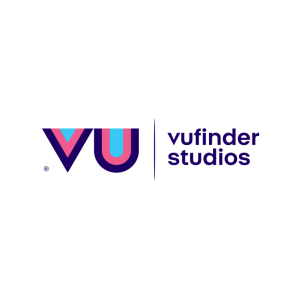
In ‘Red Planet Mars’, VuFinder Studios Transports Viewers to a Different Planet

Usually, any filmmaker who wants to ‘shoot on Mars’ has to travel to Jordan, specifically Wadi Rum – a UNESCO world heritage site characterised by red sands and outsized rock formations. That’s exactly what the makers of ‘The Martian’ (2015), ‘The Last Days on Mars’ (2013), and ‘Red Planet’ (2000) all did. Another option would be heading to VuFinder Studios where - with the help of virtual production, generative AI, and clever props – it’s possible to visit Mars without ever leaving the studio.
In its latest case study, ‘Red Planet Mars’, VuFinder Studios challenged itself to recreate the otherworldly topography of the neighbouring tawny planet to showcase exactly what creative virtual production technology is capable of. The team spent four days creating the virtual environment using a blend of models created in Unreal Engine and assets purchased from a marketplace. VuFinder also worked with a set designer who sourced and styled the rocks and pebbles needed for the physical stage to look like Mars. Both the team of Unreal artists and the set designer used ‘The Martian’ as a visual reference throughout the production while working together to ensure that the visuals between the virtual and the physical assets remained cohesive at all points.
Virtual production places significant emphasis on the pre-production phase, as highlighted by Melania Kulczycka, the client services director at VuFinder Studios. This strategic approach minimises the post-production requirements, thus streamlining the entire filmmaking process. Melania also sheds light on the extensive technology arsenal required to make a virtual production a reality: encompassing camera tracking, Unreal Engine, rendering servers, graphics cards, robust computer systems, LED walls, and the integration of generative AI.
Today, we spoke to Melania about how VuFinder Studios made ‘Red Planet Mars’, how the team experimented with dynamic lighting with the swipe of a finger during the shoot, and why this case study shows that virtual production’s technical and creative possibilities really are limitless.
LBB> Tell us how the idea for the Mars case study came about?
Melania> Have you watched a movie called “The Martian”? The action of the movie took place on the red planet Mars. The production house dispatched their crew to Wadi Rum in Jordan for shooting the "Mars" scenes. As VuFinder Studios, we are of the opinion that we could recreate this sequence within our virtual production studio, eliminating the necessity for allocating resources and time to travel. Furthermore, virtual production (VP) stands as a more environmentally conscious approach to film production. In light of this, we, at VuFinder Studios, made the strategic decision to craft a comprehensive case study showcasing that remote location shooting is unnecessary, as all requirements can be efficiently fulfilled within one virtual production studio.
LBB> How long did it take to create the digital environment and how did you do it?
Melania> The process of creating the virtual environment took approximately four working days. Some of the elements were modelled by our in-house team of Unreal artists and some of the assets were purchased from an online marketplace. For this particular case, the spacecraft was adjusted to the needs of the project by our Unreal artists but we decided it would be more beneficial to obtain the rocks and hills from a database. Thanks to this combination, we can optimise the time and costs spent on creating the virtual backgrounds. Furthermore, we can attain high quality while precisely aligning with the project brief's specifications.
Nevertheless, it's important to bear in mind that this project exclusively served internal purposes. We didn't have any predefined criteria for virtual assets, nor did we engage with any external clients throughout the process. In the realm of conventional commercial production, the journey of crafting an environment is usually more time-consuming, given the necessity for accommodating client feedback and the bespoke customization or creation of assets from the ground up.
LBB> Did you use any references for the environment, like films or documentaries?
Melania> We always try to use as many references as possible including AI image generators to promptly visualise our desired outcomes. Midjourney is a powerful tool that we use extensively. It helps us with finding inspiration for specific scenes (e.g. Mars) or with efficiently presenting a vision to other team members or clients.
In this specific case study, our primary focus was on the film 'The Martian' but you can find multiple examples in cinematography where you can see the red planet. Our aim was to demonstrate the outcome we could have attained had we shot the same film at VuFinder Studios.

Still from 'The Martian' trailer
LBB> The shoot needed some set design to ground the shots - how did Gosia Moritz create it?
Melania> Gosia Moritz, a skilled and experienced set designer, is a frequent collaborator at VuFinder Studios. The key to such an amazing final effect is maintaining a close collaboration between the set designer and our in-house Unreal artists. This ensures a cohesive end result with a seamless blend between the physical set construction and the virtual world.
In her endeavour, the set designer sourced imitation rocks and pebbles from the props department, which she then coated with tennis court-grade brick powder. Additionally, she deliberately chose rocks of assorted sizes, creating an uneven line along the physical set to blend the border between the LED wall and physical set design even further. As a reference, the set designer used “The Martian” film that was used as a reference for the whole case study.
For the Mars case study, our Unreal Artists had to adjust to the physical assets that were available from a prop department. The artists had to harmonize the texture and colours of the virtual environment with the physical rocks and pebbles.
LBB> And which tech did you use alongside VP for the shoot's production?
Melania> Virtual production encompasses a range of vital components that seamlessly come together: camera tracking, computer game engine - Unreal Engine, rendering servers, graphics cards, powerful computers, and the LED wall. In addition to these standard tools and technologies, our team harnesses the power of AI, an indispensable modern resource. Text-to-image generators, like Midjourney, play a pivotal role across various fronts. We use them to find inspiration, swiftly transforming our ideas into visual representations to share with colleagues, proposing exterior layouts, and conveying the overall mood of our concepts. Recently, AI has also taken the reins in suggesting scene lighting. With a simple text prompt, AI can propose scenes lit in precisely specified ways. Thanks to that, we can use our work time more effectively.
Another interesting technology is used for optimising our 3D environments. Virtual worlds, known for their complexity, often demand considerable computational power. To ensure a smooth operation on our hardware, our Unreal artists employ optimisation tools that lighten the virtual world without sacrificing visual quality. Thanks to this, our environments are displayed in high quality on the LED wall, even as we manoeuvre the camera, smoothly altering the perspective of the virtual landscape. It's all about achieving the perfect blend of performance and visual splendour.

LBB> What was the actor’s experience of acting in this environment like?
Melania> The actors fit perfectly into virtual production. To begin, they can see the surroundings in the scene, unlike a green screen. This helps their acting feel more genuine as they do not have to imagine the background – they see everything around them in real-time. Let’s be honest - nobody enjoys spending a whole day staring at a green or a blue cloth.
Compared to filming in a real location, the actors do not have to deal with tough conditions like extreme heat while wearing spacesuits. They also do not have to wait all day for the perfect golden hour – they can get it instantly at VuFinder Studios. Overall, the virtual production studio brings many benefits to the actors by combining the advantages of both shooting in a studio and on location while eliminating the downsides.
LBB> How much post-production was needed, as compared to a traditional shoot, to complete the video?
Melania> Virtual production places great emphasis on the pre-production phase to meticulously create virtual environments, thereby minimising the need for extensive post-production. In order to avoid any unwelcome surprises, editors are quite often present on set to showcase the nearly completed offline material to clients. The post-production process involved in virtual production can vary. But in the Mars case study, it only took a couple of days to complete. We spent one working day on editing and colour grading. Additionally, we added a voice-over to explain the process of creating virtual environments and showcase the vast possibilities that virtual production has to offer, which took another day. In total, the post-production took two working days.

LBB> What was your favourite part of working on the shoot?
Melania> The highlight of the shoot for me was undoubtedly our endeavour to craft scenery that could fully use the benefits of virtual production. Locations that are difficult, expensive or impossible to access are perfectly recreated using Unreal Engine. Through the magic of virtual production, we could create any setting even without obeying the laws of physics that govern the real world. Virtual production allows to craft any scenery without getting permission to close or access specific locations, which can be expensive and time-consuming. Additionally in this project, we could experiment with dynamic lights since we had absolute creative freedom as the case study was created for internal purposes.
LBB> Is there anything else you would like to share with us?
Melania> One of the most fascinating aspects of our project was our use of dynamic lighting in the Mars scene. This meant that we had the incredible capability to manipulate the time of day while we were shooting. What’s even more mind-blowing is that we could control the lighting with a tablet, seamlessly configured with the computers running the Unreal Engine environment. This game-changing feature allowed us to make real-time adjustments right there on the set. For instance, we could make a golden hour stretch across the entire day. Or, with just a few taps, we could switch things up to create a night-time atmosphere. And the best part? It happened in the blink of an eye, all within seconds! Virtual production, without a doubt, opened up a universe of limitless creative possibilities for us.











